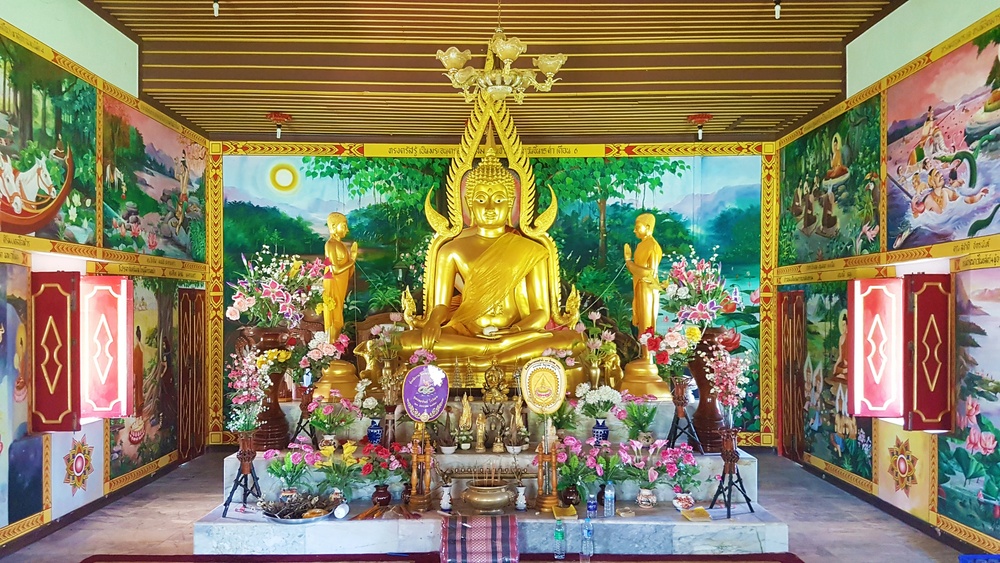India, the cradle of Buddhism, is a land where spiritual traditions and vibrant cultures come together in celebration. Among its many religious festivities, Buddhist festivals in India stand out as profound occasions that honor the life and teachings of Lord Buddha while fostering peace, cultural richness, and spiritual awakening. These festivals are celebrated with reverence and joy in regions deeply connected to Buddhism—such as Bodh Gaya, Sikkim, Ladakh, and Arunachal Pradesh—each offering a unique experience.
In this article, we explore some of the most important Buddhist festivals in India, highlighting how they beautifully blend religious devotion, cultural heritage, and the quest for enlightenment.
Buddha Purnima: The Essence of Buddhist Celebrations
The most significant of all Buddhist festivals in India, Buddha Purnima, also known as Vesak, commemorates the birth, enlightenment, and Parinirvana (passing away) of Gautama Buddha. Celebrated on the full moon day in the month of Vaisakha (April or May), it draws devotees from across India and the world to sacred Buddhist sites.
Bodh Gaya, where Buddha attained enlightenment under the Bodhi tree, becomes a hub of activity during this festival. Devotees engage in meditation, prayer, and offerings of flowers and lamps, creating an atmosphere of deep peace and devotion. The festival embodies the core Buddhist values of compassion, mindfulness, and liberation from suffering.
Losar: Tibetan New Year’s Joy and Renewal
Losar is one of the most vibrant and culturally rich Buddhist festivals in India, celebrated primarily in the Himalayan regions such as Ladakh, Sikkim, and Arunachal Pradesh. It marks the Tibetan New Year and usually falls in February or March.
This festival is a colorful blend of religious rites and joyful festivities. Monks perform sacred Cham dances wearing elaborate masks, communities gather for feasts, and homes are cleaned and decorated to welcome a fresh start. Losar symbolizes purification, renewal, and the removal of negativity, reinforcing the Buddhist ideals of peace and harmony.
Hemis Festival: Ladakh’s Cultural and Spiritual Showcase
The Hemis Festival, held annually at the Hemis Monastery in Ladakh during June or July, is a spectacular event that honors Guru Padmasambhava, credited with bringing Tibetan Buddhism to the region. It is one of the most renowned among Buddhist festivals in India.
This two-day festival features mesmerizing mask dances, music, and traditional rituals that narrate stories of good triumphing over evil. Visitors from all over the world come to witness the lively celebrations that beautifully showcase Ladakh’s rich spiritual and cultural heritage.
Saga Dawa: Month of Enlightenment and Devotion
Saga Dawa is a sacred month observed especially in Sikkim and other Himalayan Buddhist communities, celebrating Buddha’s birth, enlightenment, and Parinirvana. The full moon day of Saga Dawa is the highlight, marked by prayer ceremonies, lighting of butter lamps, and charitable acts.
Monasteries such as Rumtek and Enchey in Sikkim host grand events during this time, drawing thousands of devotees. Saga Dawa exemplifies the compassionate and enlightened spirit central to Buddhist festivals in India, inviting people to reflect on the Buddha’s teachings and deepen their spiritual practice.
Kalachakra Festival: The Path to Universal Peace
The Kalachakra Festival, held intermittently when presided over by the Dalai Lama, is a profound spiritual event focusing on the Kalachakra Tantra, a complex and esoteric teaching in Tibetan Buddhism. The festival takes place in prominent locations like Bodh Gaya.
One of the most captivating features is the creation of a sand mandala, a detailed and symbolic artwork representing the cosmos. This festival aims to promote inner peace and global harmony, reflecting Buddhism’s universal message. Though not annual, it remains one of the most revered Buddhist festivals in India.
Lhabab Duchen: Commemorating Buddha’s Heavenly Descent
Lhabab Duchen is a festival celebrating Buddha’s return to Earth from the heavenly realm after teaching his celestial mother. Observed mainly in Tibetan Buddhist communities in India, it falls in October or November.
On this day, devotees visit monasteries, perform rituals, and engage in acts of kindness, believing that positive deeds earn multiplied merit. Lhabab Duchen highlights themes of compassion and enlightenment, core to all Buddhist festivals in India.
Kagyed Festival: Spiritual Protection Through Dance
The Kagyed Festival, observed primarily in Sikkim’s monasteries such as Enchey, takes place in December and features sacred masked dances called Cham. These dances are performed by monks to ward off evil spirits and bring blessings.
Combining spiritual ritual with cultural expression, the Kagyed Festival underscores how Buddhist festivals in India are not only religious events but also vibrant cultural traditions that strengthen community bonds and preserve ancient heritage.
Conclusion: A Celebration of Spiritual and Cultural Harmony
The Buddhist festivals in India are more than just religious observances; they are celebrations of peace, culture, and enlightenment that resonate far beyond the regions in which they are held. From the sacred grounds of Bodh Gaya to the mountainous monasteries of Ladakh and Sikkim, these festivals offer spiritual seekers and travelers alike an opportunity to connect deeply with Buddhist philosophy and Indian cultural diversity.
Attending these festivals allows one to witness centuries-old traditions, experience heartfelt devotion, and absorb the serene atmosphere that defines Buddhism’s legacy in India. Whether you seek spiritual growth or cultural exploration, these festivals provide a pathway to understanding and inner transformation.
So, plan your journey around India’s Buddhist festivals and immerse yourself in celebrations that inspire peace, embody cultural richness, and illuminate the path to enlightenment.








